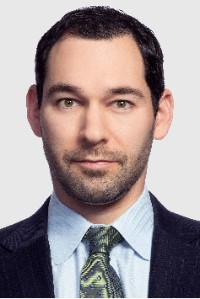Defamation & Reputation Management 2025
USA – California
Trends and Developments
Introduction
As the homebase of the entertainment industry, California has traditionally been a leader in defamation and reputation management litigation. This article explores three of the most recent trends:
- the impacts of California’s expanded protections for sexual assault victims on litigation brought by the accusers and the accused;
- celebrities’ increasing use of pseudonymous pleading and pre-suit discovery to shape the narrative in court and the press; and
- California’s race to regulate deepfake technology in expressive works.
California’s Expansion of Protections for Victims of Sexual Assault Spurs Litigation
California has led the recent trend of extending the statute of limitations for criminal and civil actions relating to claims of sexual assault. In some cases, California has enacted laws that have retroactively extended the statute of limitations and revived cases that were previously time barred. For example, California Assembly Bill 218, which went into effect on 1 January 2020, extended the statute of limitations for childhood sexual assault and opened a three-year window to file any previously time-barred claim. The Sexual Abuse and Cover-up Accountability Act ‒ which Governor Newsom signed into law effective 1 January 2023 ‒ similarly revived time-lapsed civil claims for damages resulting from sexual assault against adults occurring on or after 1 January 2009. While the window to file such revived claims against entities closed at the end of 2023, claims against the perpetrator can be filed until the end of 2026.
The revival of time-lapsed claims for sexual assault, in conjunction with the #MeToo movement more generally, have triggered a wave of threatened or filed civil lawsuits. When accusations of sexual misconduct become public, there can be serious repercussions for the reputation and career of the accused, particularly for celebrities and others in the public eye.
When such allegations first surface, the accused often has three options:
- pursue a quick settlement of the claims;
- defend against the allegations in the press and/or in court; or
- go on the offensive by filing affirmative claims, such as defamation, against the accuser.
Limitations on confidentiality in settlement agreements
A quick settlement may avoid reputational damage by preventing the allegations from becoming public. But once a claim for sexual harassment or assault is filed, California law limits the scope of confidentiality provisions that can be included in a settlement agreement. Specifically, Section 1001 of the Code of Civil Procedure prohibits any provision in a settlement agreement that restricts the disclosure of factual information relating to an act of sexual harassment or assault once such a claim is filed. Only the amount paid to settle such a claim is carved out by the statute as the proper subject of a confidentiality agreement.
Section 1002 similarly prohibits any provision in a settlement agreement that prevents the disclosure of factual information relating a felony sex offence, childhood sexual assault, sexual exploitation of a minor, or sexual assault against an elder or dependent adult. Here, the statute carves out an exception for agreements preventing the alleged perpetrator from disclosing medical or personal identifying information about the alleged victim. An attorney’s failure to comply with the requirements of Section 1002 may be grounds for professional discipline.
California’s protections against retaliatory defamation lawsuits
Sometimes the person accused of sexual misconduct decides to go on the offensive and file affirmative claims, such as defamation, against their accuser. Perhaps the most high-profile example was actor Johnny Depp’s defamation lawsuit against his ex-wife Amber Heard, which culminated in a six-week highly televised trial and a multimillion-dollar judgment for Depp. However, that case was litigated in Virginia, not California.
Litigants suing their accusers in California face the risk of being forced to pay their accusers’ attorney’s fees if they lose under California’s anti-SLAPP statute (SLAPP is an acronym for “strategic lawsuit against public participation”) and a newly enacted statute that makes communications about sexual assault or harassment privileged if they are made without malice.
California’s anti-SLAPP statute
California’s anti-SLAPP statute allows defendants to seek dismissal of claims at the beginning of the lawsuit if those claims arise from protected activity ‒ essentially lawsuits where a defendant is being sued for exercising their First Amendment rights of free speech or petition. In the context of speech-based claims, the anti-SLAPP statute applies where a defendant is being sued for making statements in connection with a matter of public interest. Courts have previously found that public accusations of sexual assault against those in the public eye qualify as statements made in connection with a matter of public interest.
If a defendant demonstrates that the claims against them arise from protected activity, the burden shifts to the plaintiff to show, through admissible evidence, a probability of prevailing on the merits of their claims. If they cannot do so, not only will the claim be stricken, but the defendant will be entitled to recover reasonable attorney’s fees and costs incurred in litigating the motion. Notably, the entitlement to recover the attorney’s fees is not reciprocal. A prevailing plaintiff only recovers the attorney’s fees if the court finds that the defendant’s anti-SLAPP motion is frivolous.
California’s new privilege law
A new California law that went into effect in 2024 significantly expands the risk that a plaintiff suing for defamation based on statements about sexual harassment or assault will end up paying the attorney’s fees of their accuser. Specifically, Civil Code Section 47.1 now provides that a “communication made by an individual, without malice, regarding an incident of sexual assault, harassment or discrimination is privileged under Section 47”. Moreover, a “prevailing defendant in any defamation action brought against that defendant for making a communication that is privileged under this Section shall be entitled to their reasonable attorney’s fees and costs for successfully defending themselves in litigation, plus treble damages for any harm caused to them by the defamation action against them, in addition to punitive damages available under Section 3294 or any other relief otherwise permitted by law”.
Section 47.1 applies to accusers who had a reasonable basis to file a complaint of sexual assault, harassment or discrimination, whether or not they did so. And communications under this Section includes all factual information related to an incident of sexual harassment or assault.
Unlike the anti-SLAPP statute, which only shifts fees to the plaintiff at the beginning of the case and only if the plaintiff fails to demonstrate that their claims have minimal merit, this new law shifts fees when a defendant prevails at any stage of the case on a defamation claim relating to accusations of sexual harassment or assault. Defamation cases based on accusations of sexual assault that hinge on the parties’ credibility will now carry significant risks for plaintiffs suing their accusers, even if their claims survive an anti-SLAPP motion. And the potential fee awards under this statute could be significantly higher, particularly if the case goes to trial.
High-Profile Litigants Seek to Shape Narrative Through Doe Complaints and Pre-Suit Discovery
As state courts have gone digital (in Los Angeles, for example, the Media Access Portal allows reporters to view pre-filed civil complaints upon electronic submission ‒ ie, before they are generally available to the public), it is increasingly difficult for high-profile individuals to “hide” their complaints. That may not matter when the putative plaintiff already has enough discovery to tell a persuasive narrative, or when they desire publicity. But what if they do not? The past year has seen an increasing use of two extant mechanisms: filing pseudonymously and obtaining pre-suit discovery.
Doe complaints
California statutory law specifically permits the use of pseudonyms in a variety of cases, but none of them apply to common law reputational torts. Nevertheless, high-profile plaintiffs are increasingly choosing to proceed pseudonymously, at least initially.
A notable recent example is Jay-Z’s response to a demand letter from the lawyer of an accused rape victim. Instead of merely suing for extortion, the rapper sued as “John Doe”, a “celebrity and public figure” from whom the defendant was attempting to “extort exorbitant sums” by making false assault claims. Quite unusually, the 235-page complaint included as exhibits transcripts of a press conference and numerous television interviews. Within a day, press outlets had reported on the filing, and readers were speculating about the plaintiff’s identity. A few weeks after the filing, after the accuser amended her New York federal complaint to name Jay-Z as one of the Doe defendants, Jay-Z acknowledged having filed the Doe complaint. He then amended that complaint to be in his legal name. Given that no discovery could have taken place in the four weeks between the initial and amended filings, it appears the John Doe complaint was a vehicle for “getting out ahead of the story”. Put differently, by filing his own action instead of counterclaiming in the New York case against him, he was able to tell his story first. And by filing his action pseudonymously, he could claim – perhaps implausibly – that he was motivated by the defendant’s nefariousness, not by his own desire to clear his name.
Jay-Z was not the only musician to take this tack. Country singer Garth Brooks sued his former hairstylist and makeup artist in a Mississippi federal court as “John Doe”, a “well-known celebrity and public figure who resides in Tennessee.” Unlike Jay-Z’s pseudonymous suit, Brooks’ was pre-emptive ‒ the accuser had sent him a draft complaint, which she threatened to file by a date certain, and he won the race to the courthouse. It remains to be seen whether his gambit will succeed: at the time of publication, the California federal court adjudicating the accuser’s complaint had deferred consideration of Brooks’ motion to dismiss until the Mississippi court had ruled on the motion to dismiss in that court. As with the Jay-Z complaint, journalists were quick to sniff out the identity of John Doe, and anonymity lasted mere weeks. But it did give him an edge in the race to the courthouse, where – under the “first-filed rule” – minutes matter.
Pre-suit discovery
California is among the states that permit pre-litigation discovery. Under Section 2035.030 of the Code of Civil Procedure, “[o]ne who desires to […] preserve evidence” may “file a verified petition” in a superior court, which sets forth, among other things, the “particular discovery methods” (eg, subpoena) the “petitioner desires to employ”, the “facts that the petitioner desires to establish by the proposed discovery”, the “reasons for desiring to […] preserve these facts before an action has been filed”, the identity of the targets of discovery, and the “substance of the information expected to be elicited” from them.
This statute would have been a logical vehicle for obtaining the text messages reflected in Blake Lively’s bombshell sexual harassment complaint against It Ends With Us co-star/director Justin Baldoni, his production company (Wayfarer Studios), and his communications team. According to Lively’s lawyers, she obtained them “through legal process, including a civil subpoena”. But there is no record of a verified petition, pseudonymous or otherwise, against the defendants. Nor is there a Doe lawsuit against them. Similarly, pre-suit discovery is available in connection with California Civil Rights Department (CCRD) investigations. But under Government Code Section 12963.4, such subpoenas may only be issued by the CCRD (the state equivalent of the Equal Employment Opportunity Commission), with whom Lively filed her original complaint. So Lively could not have used a CCRD investigation of her complaint as a vehicle to obtain the very discovery she included in it.
But while the precise procedural vehicle employed by Lively remains unclear, the fruits of the discovery are undeniable. Text messages between defendants ‒ in this case, Baldoni’s publicists ‒ are a step (or two) above the typical allegations on information and belief. That is especially true when those text messages are fed to The New York Times for use in a graphics-heavy exclusive. To be sure, pre-suit discovery is neither automatic nor secret ‒ the petition must be granted after a noticed hearing, which is presumptively public. Still, going forwards, high-profile plaintiffs may find it appealing where, as in the Lively/Baldoni litigation, the PR stakes are as high ‒ if not higher ‒ than the litigation stakes.
California Expands Mechanisms for Combating Deepfakes in “Expressive” Works
For decades, California’s statutory and common law protections for the “right of publicity” were largely effective in protecting celebrities and non-celebrities alike from unauthorised uses of their names, images, likenesses, voices and personas. During the past several years, however, technological advancements that allow for the creation of highly realistic replicas of a person’s face or voice ‒ so-called deepfakes ‒ have revealed “blind spots” in the existing right of publicity jurisprudence, where some unfairly exploitative uses of one’s persona seem to slip through the cracks of the existing right of publicity law. The California legislature has reacted by amending the statutory provision protecting the rights of publicity of deceased personalities (Civil Code Section 3344.1) and by enacting new provisions that clamp down on deepfakes in specific contexts, including in connection with elections. Still, the law has not yet caught up with the technology, which could force practitioners to seek remedies in less obvious places, such as under the federal trade mark law.
By way of two examples, many have seen the Tom Cruise impersonator who, working with a computer graphics expert, created and posted on social media numerous videos in which a digitally enhanced replica of a young Cruise engages in bizarre conversations and antics. Similarly, in 2023, a music track called Heart on My Sleeve was created and posted online using AI replications of the voices of Drake and The Weekend. For those who represent actors, musicians and others in the spotlight, and who are charged with safeguarding their reputations, these deepfakes are obviously concerning. One could easily imagine a variety of pernicious uses of deepfakes. Consider, for example, political ads containing deepfakes of a political candidate appearing to make compromising statements, or deepfakes of actors giving the appearance that they are acting in films or television shows with which they have no association.
Existing right of publicity law is well suited to regulate some of this conduct, but not all of it. California’s right of publicity statute, Civil Code Section 3344, governs usages of another’s name, image and likeness only “on or in products, merchandise, or goods, or for purposes of advertising or selling, or soliciting purchases of, products, merchandise, goods or services”. Owing to the express limitations – and also because of First Amendment implications, which are routinely invoked as a defence to right of publicity claims – the protections afforded by this statute, and by the common law right of publicity, are predominantly confined to the “commercial” context in which a person’s name, image or likeness is used in connection with the sale or advertising of goods and services. By contrast, California courts have consistently held that there is little to no protection for non-consensual uses of a person’s name, image or likeness in the context of expressive works such as films, television shows and songs. Thus, for example, the law does not prevent content creators (with or without a licence) from producing biographical or even fictionalised works about a public figure, just as, for example, it does not prevent writers and publishers from producing and selling unauthorised biographies.
Although the dividing line between commercial uses, on the one hand, and non-commercial, First Amendment protected, expressive uses, on the other hand, has worked in the past, the logic breaks down with deepfake technology. Manifestly, there is something materially different between producing an expressive work about a famous person ‒ which would not violate the right of publicity ‒ and producing an expressive work in which the audience is led to believe, through the use of computer-generated deepfakes, that the person is actually appearing themself in the work. Yet, one could easily read the language in prior cases as suggesting that the First Amendment provides a defence to this type of use of a celebrity’s image and persona, where the work is expressive and not commercial.
To deal with the new implications of deepfakes, the California legislature has passed a flurry of legislation specially targeting digital replicas. The legislature amended Civil Code Section 3344.1, which protects the rights of publicity of deceased persons, to expressly prohibit the creation or distribution of a “deceased personality’s voice or likeness in an expressive audiovisual work or sound recording without prior consent” ‒ note the specific sweeping in of “expressive” works ‒ subject to various exceptions for newsworthy uses, satire and the representation of individuals in documentary, historical or biographical matters. Numerous other provisions have been enacted that prohibit deepfakes in the context of elections (eg, AB-2655 and AB-2389) and in connection with pornography (eg, Civil Code Section 1708.86). Through AB-2602, the Legislature amended sections of the Labor Code to impose restrictions on contracts that allow for the creation of performances using digital replicas. But because the Legislature has yet to amend Civil Code Section 3344 ‒ the statutory right of publicity for living persons ‒ there is still no California statute tailored to shutting down expressive works containing deepfakes of living actors, musicians and other celebrities.
Section 43(a) of the federal Lanham Act is perhaps the best mechanism existing currently to police deep fakes in expressive works. Case law in the Ninth Circuit Court of Appeals (and other circuits) recognises that a celebrity’s persona is akin to a trade mark, such that unauthorised uses of a celebrity’s name, likeness or voice can give rise to a claim for false designation of origin. One could also imagine courts finding that a deepfake, which depicts a celebrity in a performance they did not give, gives rise to a claim for false light invasion of privacy. Until Section 3344 is amended, or until the US Congress acts ‒ note that two bills have been introduced, the DEEPFAKES Accountability Act and No FAKES Act, which propose strict prohibitions on deepfakes ‒ practitioners will be looking as much if not more to trade mark and privacy law as they do to right of publicity law to combat deepfakes in expressive works.
Kinsella Holley Iser Kump Steinsapir LLP
11766 Wilshire Boulevard
Suite 750
Los Angeles
California 90025
USA
+1 310 566 9800
+1 310 566 9800
klahs@khiks.com www.khiks.com





